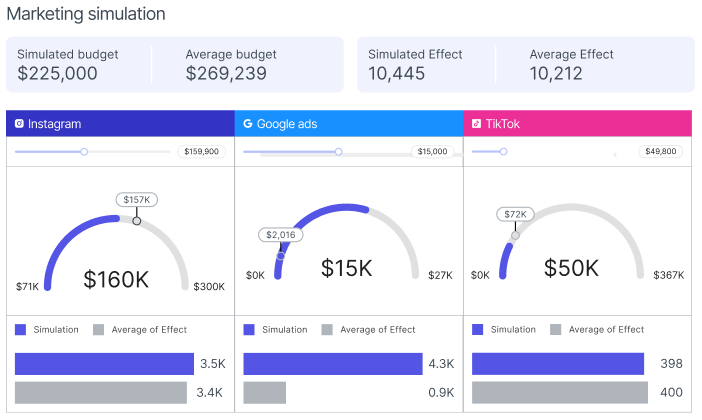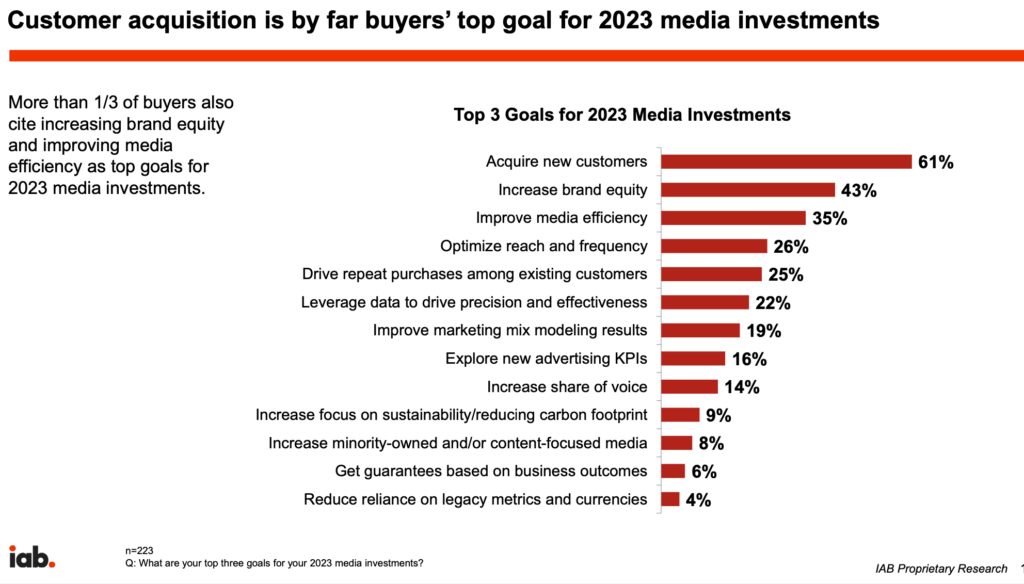If you’ve relied on traditional first-touch or last-touch campaign attribution models for years, it’s time to shake things up.
The truth is, the days of cookie-based attribution modeling are numbered. Marketers need to proactively explore alternative approaches to prepare for the inevitable end of cookies. With iOS changes and Google’s announcement that they will be phasing out cookies by 2024, it’s more important than ever for marketers to take action.
The writing is on the wall: Cookie-based attribution modeling will soon be a thing of the past. According to recent studies, fewer than 50% of CMOs are currently prepared for the end of third-party cookies, which is quite concerning, seeing that over 75% of marketers are heavily reliant on cookies for measurement and ad targeting.
This lack of preparedness could have severe consequences for companies that fail to adapt to the changing landscape of digital advertising. By testing and implementing alternative attribution models now, marketers can position themselves for success in a post-cookie world.
In this article, we’ll explore the basics of attribution, the flaws of traditional models, and how machine learning is opening the door to new ways to measure your ad campaign and improve campaign performance. We’ll also look at how a major U.S. company transitioned to new methods of attribution modeling and the results they saw.
Understanding the basics of campaign attribution
Over the past 5 years, leading analysts have said that adding four or more channels to an integrated campaign will increase results by 300%. As brands add more channels to reach their buyers, measurement becomes more and more complicated. There’s a stronger need to measure and attribute success to the channel that drove the conversion or sale.
Attribution is the process of identifying which marketing activities have contributed to a conversion event. Attribution modeling attempts to assign credit to these activities based on their presumed impact, regardless of whether they were the first, last, or middle touchpoint for a customer.
There are several types of attribution models, including first-touch, last-touch, linear, time-decay, and position-based. Each model has strengths and weaknesses, and the choice of model depends on your business’s specific goals and needs.
It’s essential to regularly review and adjust attribution models to ensure they accurately reflect the impact of marketing activities on conversions.
The flaws of traditional campaign attribution models
Traditional attribution models use static or rule-based attribution, which assigns predetermined weights to channels or touchpoints in your funnel, regardless of contextual factors. These models do not take into account the fact that a customer may have interacted multiple times on multiple devices and channels. Therefore, these models often misattribute credit to channels that played a minor role in the final decision.
Traditional models may also over- or under-attribute credit to channels based on assumptions that may not be true. For example, a typical first-click attribution model may place too much credit on the channel that first introduced the customer to your brand, even if that channel played a small role in the final conversion.
One of the biggest flaws of traditional attribution models is that they do not consider the impact of offline touchpoints. In today’s world, customers interact with brands both online and offline. It’s critical to consider the impact of offline touchpoints such as in-store visits or phone calls.
Unfortunately, traditional attribution models can’t always accurately attribute credit to these touchpoints, leading to an incomplete understanding of the customer journey and potentially missing out on valuable insights. Therefore, it is crucial to consider a more holistic approach to attribution that incorporates all touchpoints, both online and offline.
The misattribution of offline events, whether offline media or sales, has led many brands to reconsider marketing mix modeling (MMM) as a core attribution method.
Now, with the help of machine learning and artificial intelligence, marketers can develop these models in weeks. Even better, the cost to develop them is cut in half. We will go into more details about MMM later in this post.
The importance of a data-driven attribution model
A data-driven attribution model is more sophisticated than traditional models. It uses machine learning and algorithms to determine the actual contribution of each touchpoint in the customer journey.
Data-driven attribution models analyze large data sets to determine the incremental impact of each touchpoint, considering other contextual data factors such as time since the last interaction, the type of device used, and the specific action taken on each touchpoint.
The model then assigns credit accordingly. Implementing a data-driven attribution model can lead to more accurate and effective marketing strategies.
By understanding the true impact of each touchpoint, businesses can allocate their marketing budget more efficiently and optimize their campaigns for maximum ROI.
Additionally, data-driven attribution models can provide insights into customer behavior and preferences, allowing businesses to tailor their messaging and offerings to better meet the target audience’s needs.
How a data-driven model can improve campaign performance
A data-driven attribution model can improve your campaign performance by providing insights into which channels drive the most conversions, which touchpoints in the funnel are the most underutilized, and which areas your marketing should focus on the most.
By analyzing each of these data points, you can optimize your marketing campaigns and achieve a better return on investment. As mentioned, marketing mix modeling powered by machine learning is gaining popularity for this reason.
In addition to looking at offline events (media schedules and sales), an ML-based MMM approach allows you to analyze media saturation points and if a channel, media partner, or ad campaign can drive incremental lifts in sales.
How machine learning opens new doors for campaign attribution
Machine learning has revolutionized data-driven attribution by enabling marketers to analyze vast amounts of data and uncover valuable insights that were previously impossible to identify. With traditional attribution models, marketers were limited to analyzing the touchpoints that were easily measurable, such as clicks and conversions.
However, machine learning algorithms can analyze a wide range of data points and identify patterns and relationships that may not be immediately apparent to humans. One of the key benefits of machine learning in attribution modeling is its ability to identify the most significant touchpoints in the customer journey, even when those touchpoints may not be obvious.
For example, machine learning algorithms can analyze a customer’s behavior across multiple channels and devices and identify patterns that indicate which touchpoints are most likely to drive conversions. This approach enables marketers to optimize their campaigns for maximum effectiveness.
Companies are now combining MMM with machine learning to create more sophisticated attribution models. By using machine learning algorithms to analyze data from MMM, marketers can gain insights into how individual touchpoints contribute to overall performance. Then, they can optimize their marketing campaigns accordingly.
Overall, marketing mix modeling remains a valuable technique for understanding the impact of different marketing channels on business outcomes. However, it is becoming increasingly important to combine MMM with more advanced attribution modeling techniques, such as machine learning, to gain a complete picture of how customers interact with marketing touchpoints.
Making the switch to data-driven attribution models
Pecan worked with a major North American brand to help model their marketing mix and find efficiencies in ad spend. Pecan ingested five years of campaign data and modeled over a billion dollars in annual ad spend to identify a better channel mix for driving inbound inquiries. As a result, the brand identified opportunities to reduce ad spend by roughly 25% for $200M in ineffective ad spending.
Future trends in campaign attribution: What's next for the industry?
As marketers become increasingly sophisticated in their use of data, and regulatory and platform changes restrict what campaign data marketers can collect, we can expect continued innovation in campaign attribution.
Marketing mix modeling, once a legacy method focused on measuring traditional media outlets, is now gaining momentum as a trustworthy method to measure channel performance while aligning with consumer privacy laws.
Now with the help of AI and machine learning, MMM can enable marketers to analyze data even more effectively and achieve more accurate results. As the industry continues to evolve, data-driven attribution models are sure to become even more important, helping organizations to better understand their customers, optimize their marketing campaigns for maximum ROI, and know how and where to send their next ad dollar.
We’d love to help you take the next steps toward a proactive, future-focused marketing attribution strategy. Contact us to set up a time to chat about Pecan and your marketing team’s needs.





